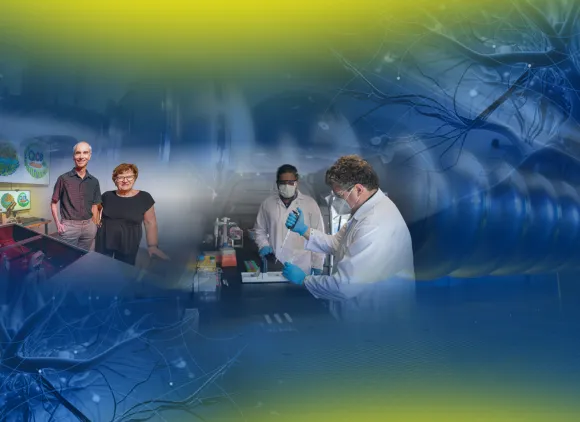Biology Integration Institutes (BII)
The NSF Biology Integration Institutes (BII) program supports collaborative teams of researchers investigating questions that span multiple disciplines within and beyond biology. The answers to these questions will increase our understanding of life at different levels of organization from molecules to cells, tissues to organisms, species, ecosystems, biomes and the entire Earth.
Science and Technology Centers (STCs)
BIO supports four NSF Science and Technology Centers that seek to address grand challenges in biology, from determining the minimal requirements for a cell to developing an Internet of Living Things to advance resilient agriculture.
NSF Science and Technology Center for Quantitative Cell Biology (NSF QCB)
Led by the University of Illinois Urbana-Champaign, the NSF QCB will use cutting-edge imaging and simulation tools to create whole-cell models to transform our understanding of how cells function.
This research will increase our understanding of healthy and diseased cells, gene expression, metabolism and cell division. The center is also partnering with Minecraft to share science with the public.
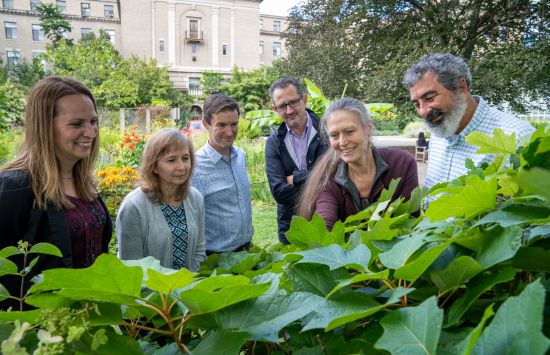
NSF Center for Research on Programmable Plant Systems (NSF CROPPS)
NSF CROPPS, located at Cornell University, is working to develop an Internet of Living Things, creating an avenue for agricultural transformation and ecological preservation that relies on monitoring and responding to signals and changes from plants and the associated organisms that comprise their biomes.
The center brings together multiple disciplines to build the field of digital biology and expand our ability to create resilient, nutrient-rich agriculture.

NSF Center for Cellular Construction
The vision of the NSF Center for Cellular Construction, led by the University of California San Francisco, is to develop tools, training and science to enable the design and building of cells and tissues with specific 3D structures.
These cells and tissues will serve as living factories and building blocks for better and more sustainable products, materials and devices to benefit humankind.
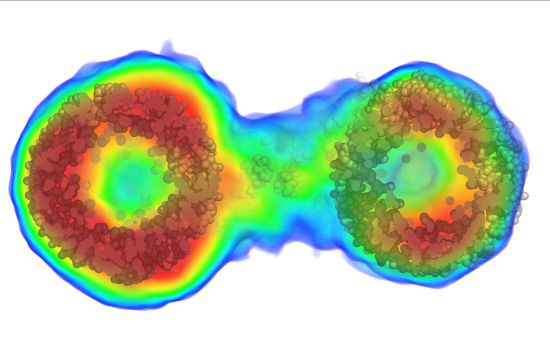
NSF Center for Biology with X-ray Free Electron Lasers (NSF BioXFEL)
Led by the University at Buffalo, the NSF BioXFEL aims to address fundamental questions in biology at the molecular level.
The multi-institutional research team uses a pulsed hard X-ray laser to capture images of biological molecules in atomic detail, view their functional motions by taking brief snapshots and observe interactions in their native environment.
This new level of imaging will allow scientists to better understand processes that are drastically impacted by movements at the atomic and molecular scale such as photosynthesis, drug delivery and interaction and the function of enzymes.
NSF AI Institute for Artificial and Natural Intelligence (NSF ARNI)
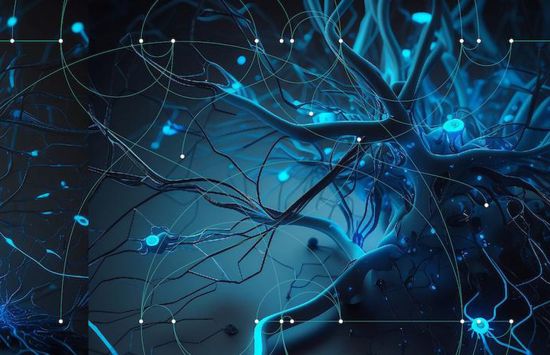
One of the National Artificial Intelligence Research Institutes (AI Research Institutes), NSF ANRI builds on advances in AI and neuroscience to enable innovation in using AI to understand the brain. Columbia University leads NSF ARNI with partners in academia, the nonprofit sector and industry. Research areas include neural mechanisms, language and vision, robust and flexible learning, and causality and uncertainty. This work could help improve assistive technologies and mobile assistants and spur advances in fundamental biology.
NSF-Simons National Institute for Theory and Mathematics in Biology (NSF-Simons NITMB)

In partnership with the Simons Foundation, NSF-Simons NITMB aims to build a mathematics-based understanding of biology at all scales of life — from individual cells to interactions between species. Led by Northwestern University in collaboration with the University of Chicago, the institute brings together experts across the mathematical and biological sciences to explore research challenges related to various topics and industries, such as the environment, biomedicine and biotechnology.
Synthesis Centers
Synthesis Centers are a mechanism used by BIO to bring together communities that leverage existing data to make discoveries through synthesis, analysis and integrative training. Synthesis Centers do not directly support the generation of new data but are dedicated to facilitating the use of available data by multidisciplinary research teams to address compelling scientific questions.

Environmental Data Science Innovation and Inclusion Lab (ESIIL)
ESIIL is led by the University of Colorado Boulder in collaboration with NSF CyVerse at the University of Arizona and the University of Oslo.
It enables a global community of environmental data scientists to leverage the wealth of environmental data and emerging analytics to develop science-based, data-driven solutions to pressing challenges in biology, other environmental sciences and society.
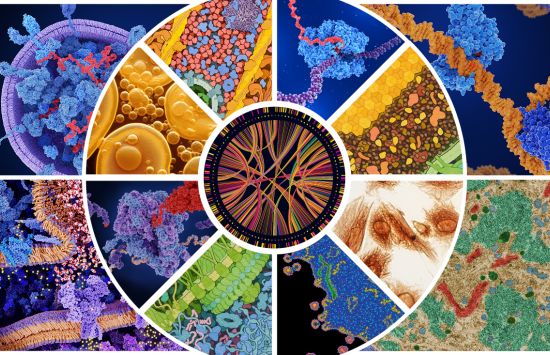
NSF National Synthesis Center for Emergence in the Molecular and Cellular Sciences (NCEMS)
Led by Penn State in collaboration with NSF CyVerse at the University of Arizona, NCEMS drives innovation and progress in molecular and cellular biosciences using existing data.
The center brings together interdisciplinary teams of researchers and enables them to apply data science approaches, including AI and machine learning, to understand how properties and interactions of molecules at the subcellular and cellular scales give rise to complex biological phenomena.
Predictive Intelligence for Pandemic Prevention (PIPP) Centers
NSF PIPP Centers support multidisciplinary research and training, technology and data, and the sustained collaboration needed to enable early detection and prevention of potential pandemics — whether they affect humans, animals or plants — and develop effective mitigation and response activities.
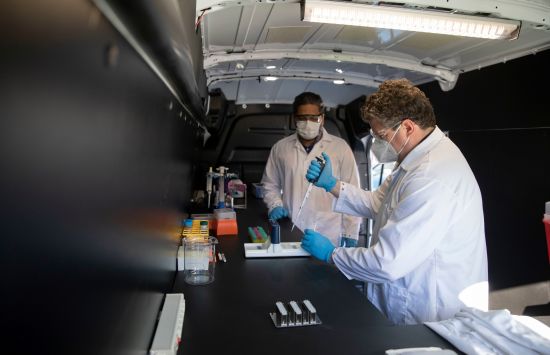
NSF Environmental Surveillance Center for Assessing Pathogen Emergence (NSF ESCAPE)
Led by the University of Kentucky, NSF ESCAPE will focus on environmental surveillance by combining social science, engineering, bioinformatics and risk modeling.
Collaborating institutions include the Alaska Native Tribal Health Consortium, Arizona State University, the University of Alaska Anchorage and the Wildlife Conservation Society.
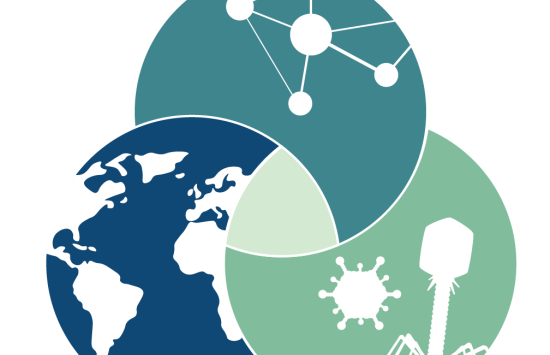
NSF Center for Analysis and Prediction of Pandemic Expansion (NSF APPEX)
NSF APPEX focuses on the expansion from isolated cases to an outbreak to a pandemic.
Led by the University of Tennessee at Knoxville in collaboration with institutions across the country, APPEX brings together experts from biomedical sciences, ecology, social and behavioral science, economics, environmental science, and more to understand pandemic risk and create improved methods for scenario comparison.
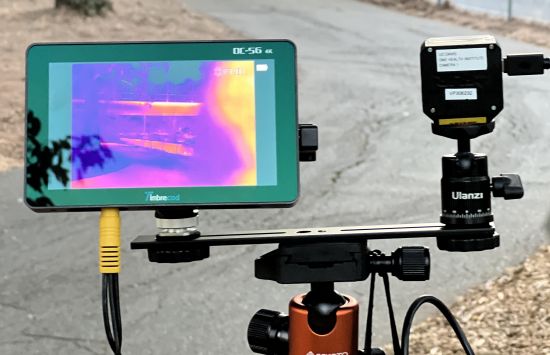
NSF Center for Pandemic Insights (NSF CPI)
Led by the University of California, Davis, and engaging 11 partnering institutions nationwide, NSF CPI will focus on investigations into the pre-emergence phase of pandemic threats to identify key events that precipitate pandemics and inform solutions.
The center's work includes modeling of disease spread from animals to humans, the creation of new sensor networks and the use of advanced computer programs that combine model predictions with data from the sensors.
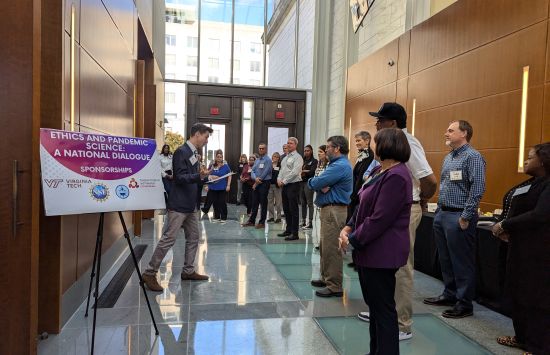
NSF Center for COMmunity Empowering Pandemic Prediction and Prevention from Atoms to Societies (NSF COMPASS)
The NSF COMPASS Center, with collaborators from Virginia Tech, Cornell University, Wake Forest University, the University of Michigan, and Meharry Medical College, seeks to forecast and control future viral pandemics by creating predictive models.
These models incorporate an increased understanding of the genetic, molecular, cellular, and chemical rules of life underlying pathogen-host interactions.
COMPASS will achieve its goals through community-based and ethically grounded research.


